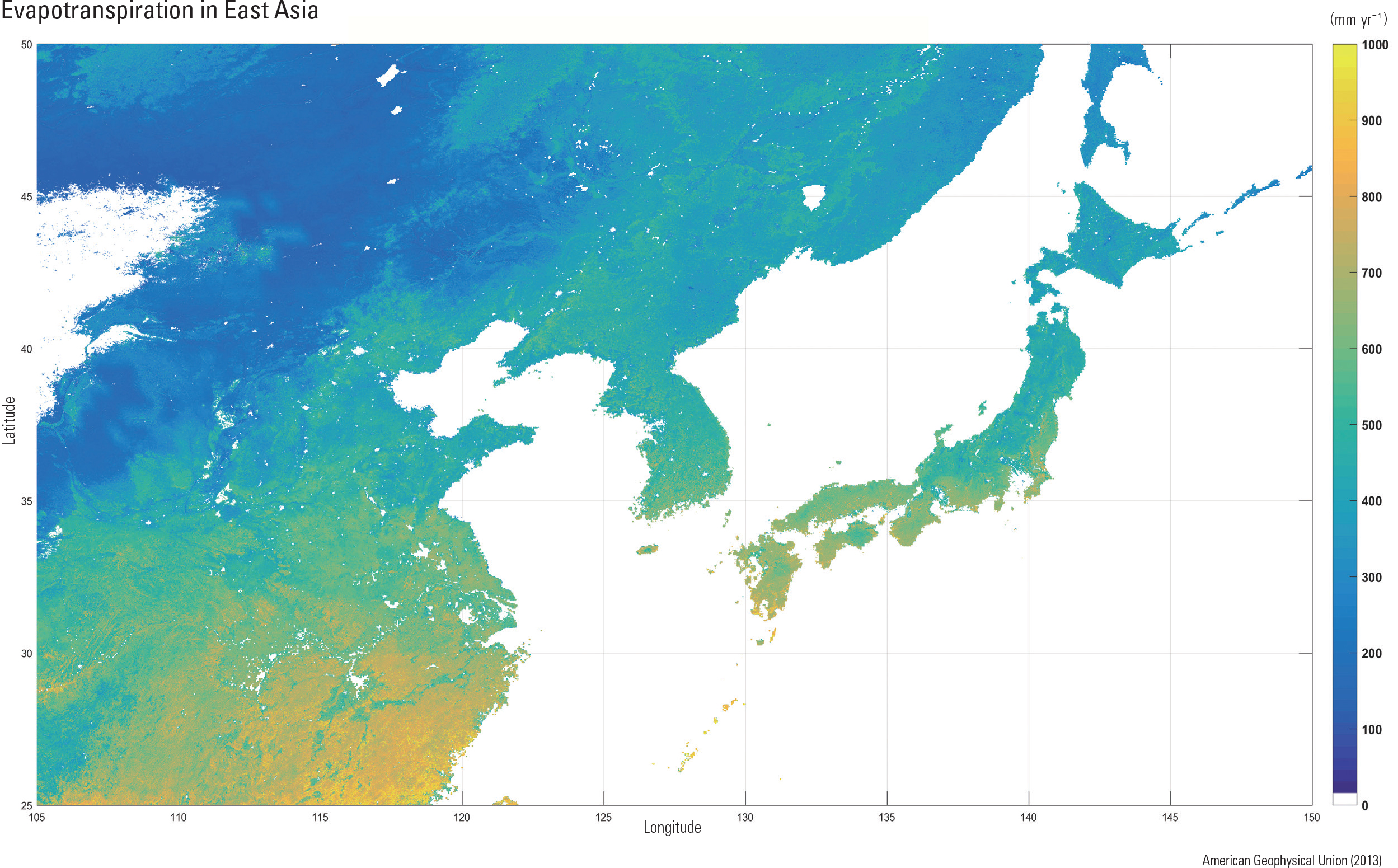English II
Korea has a significantly high degree of eco- logical diversity considering the size of its land. Likewise, ecosystems display considerable spatial variation due to the different levels of photosyn- thesis and evotranspiration in plants according to the climate and biota of the area. Net Primary Productivity (NPP) is the differ- ence between Gross Primary Productivity (GPP) and autotrophic respiration of a primary producer, mostly plants. NPP determines photosynthetic products that are available to humans, animals, and microbes. The annual means of NPP and GPP from 2000 to 2009 reveal that the values vary with latitude, distance from the sea, and land cov- er. This is because factors such as local climate, length of the growing season and biomass affect the rate of photosynthesis in plants and the con- sumption rate of animals and microorganisms. Thus, NPP and GPP values are higher in lower atitudes than in higher latitudes, decrease with distance from the sea, and are very low in dry regions such as western China and the Mongolian plateaus. Evapotranspiration includes evaporation from water bodies such as seas, lakes, and rivers and transpiration through the stomata in leaves. Evapotranspiration returns around half of the precipitation received on land to the atmosphere; thus, it is an important ecological component which regulates regional and global climates. Plants lose water vapor through stomata openings but gain atmospheric carbon dioxide which is essential for photosynthesis. Thus, evapotrans- piration and photosynthesis are physiologically coupled and show a positive correlation. There- fore, the annual evapotranspiration map of North- eastern Asia shows a spatial pattern similar to that of the region’s GPP; evapotranspiration increases with latitude and decreases with urbanization. GPP and evapotranspiration in Korea show intermediate values compared to those of Japan and China at similar latitudes. Japan, which ex- periences high temperatures and high humidity of a marine climate, shows higher values, whereas China, which experiences a continental climate, exhibits lower values. Western China, located far from the sea, shows lower GPP and evapo- transpiration compared to the other regions at equal latitudes. Korea shows an increased GPP and evapotranspiration at lower latitudes and at regions closer to the Paci c Ocean. This is caused by the climatic characteristics of the southern and eastern coasts and by comparatively high temperatures and humidity, which cause the wide distribution of evergreen broad-leaved trees and evergreen needle-leaved trees.
page_2 |



